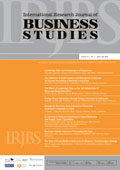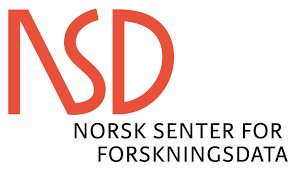Article Metrics |
|
|
Social Entrepreneurship Development Strategy
Abstract
This study aimed to analyze the strategy of developing social entrepreneurship with the Social Impact Canvas method on Sahawood. This study used a qualitative method with a case study approach. Data collection method was done by using observation and interviews with four informants who were directly involved in the Sahawood business process. The Social Impact Canvas provides an overview of business development strategies contained in the components of anchor purpose; value prepositions; stakeholders; stakeholders relationship; channel; key activities; key resources; key partners; revenue streams; magnitude; costs; differentiation. The findings in this study indicate that the social value of Sahawood creates a strong brand story and becomes a strength in attracting consumers. As a social entrepreneurship, Sahawood was able to become a place for former addicts to change for the better and control the beneficiaries from using drugs again and committing criminal acts. Social Impact Canvas is not only describing business implementation but also highlighting social values and business uniqueness in social entrepreneurship. This study has implications for the development of Sahawood’s future business strategy.
Full Text:
References
Abdoun, A., and J. Ibrahim. 2018. Business Model Canvas, the Lean Canvas and the Strategy Sketch: Comparison. International Journal of Scientific & Engineering Research 9 (1): 871-889.
Austin, J., H. Stevenson, and J. Wei-Skillern. 2006. Social and commercial entrepreneurship: same, different or both?. Entrepreneurship Theory and Practice 31(1): 1-22. DOI: 10.1111/j.1540-6520.2006.00107.x
Boysen, V., and R. Sahlberg. 2008. The Key Success Factors of Grameen Bank – A Case Study of Strategic. Cultural and Structural Aspects. School of Management, Lund University. Sweden.
Calderon, J. 2015. The social Blueprint Toolkit: Impact Canvas. Impact Strategy Advisors.
Chou, D.C. 2017. Applying design thinking method to social entrepreneurship project. Computer Standart & Interfaces 55, 73-79. DOI: 10.1016/j.csi.2017.05.001
Coker, K. K., R. L. Flight., and K. N. Valle. 2017. Social entrepreneurship: the role of national leadership culture. Journal of Research in Marketing and entrepreneurship 19 (2): 125-139. https://doi.org/10.1108/JRME-10-2016-0040
Deighton, J., and L. Kornfeld. 2009. Interactivity’s unanticipated consequences for marketers and marketing. Journal of Interactive Marketing 23 (1): 2-12. DOI: 10.1016/j.intmar.2008.10.001
Dess, J. G., J. Emerson., and P. Economy. 2001. Enterprising Non Profit: A tool for social entrepreneur. Wiley Non Profit Series.
Ebrashi, R. E. 2013. social entrepreneurship theory and sustainable social impact. Social Responsibility Journal 9 (2): 188-209. DOI: 10.1108/SRJ-07-2011-0013
Granados, M. L., V. Hlupic, E. Coakes, and S. Mohamed. 2011. social enterprise and social entrepreneurship research and theory: A bibliometric analysis. Social Enterprise Journal 7 (3): 198-218. DOI:10.1108/17508611111182368
Karanda, C., and N. Toledano. 2012. Social entrepreneurship in South Africa: a different narrative for a different context. Social Enterprise Journal 8 (3): 201-215. http://dx.doi.org/10.1108/17508611211280755
Maurya, A. 2012. How to Create Your Lean Canvas. [On Line]. From: https://leanstack.com /LeanCanvas.pdf [December 22, 2018].
Mody, M., J. Day., S. Sydnor., and W. Jafe. 2016. Examining the motivations for social entrepreneurship using Max Weber’s typology of rationality. International Journal of Contemporary Hospitality Management 28 (6): 1094-1114. DOI: 10.1108/IJCHM-05-2014-0238
Moleong, Lexy J. 2001. Metode Penelitian Kualitatif. Bandung: PT. Remaja Rosadakarya.
Prieto, L. C., and S. T. A. Phipps. 2014. Capitalism in question: Hill, Addams and Follett as early social entrepreneurship advocates. Journal of Management History 20 (3): 266-277.
Rutmawati, Siti. Sahawood, frame kacamata kayu kualitas ekspor karya mantan pecandu. Merdeka.com, 7 June 2017, Pages: 1. Malang: Merdeka Malang.
Semcow, K., and J. K. Morrison. 2018. Lean startup for social impact: Refining the National Science Foundation’s Innovation Corps model to spur social science innovation. Social Enterprise Journal 14 (3): 248-267. https://doi.org/10.1108/SEJ-02-2018-0013
Solihah, E., A. V. S. Hubeis., and A. Maulana. 2014. Business Model Analysis of KNM Fish Farm with Business Model Canvas (BMC) Approach. Jurnal Sosek KP 9 (2). http://dx.doi.org/10.15578/jsekp.v9i2.1220
Sun, M. 2012. How does the variance of product ratings matter?, Management Science 58 (4): 696-707. DOI: 10.1287/mnsc.1110.1458
Welsh, D. H. B., and N. Krueger. 2012. The evolution of social entrepreneurship: what have we learned?. Journal of Technology Management in China 7 (3): 212-222.
Wibowo, H., and S. A. Hulhaqim. 2015. Kewirausahaan Sosial - Merevolusi Pola Pikir dan Menginisiasi Mitra Pembangunan Kontemporer. Bandung: Unpad Press.
Williams, C.C., and S. Nadin. 2011. Beyond the commercial versus social entrepreneurship divide: Some lessons from English localities. Social Enterprise Journal 7 (2): 118-129. DOI: 10.1108/17508611111156592
Yunus, M., B. Moingeon., and L. Lehmann-Ortega. 2009. Building social business Models: Lessons From The Grameen Experience. Long Range Planning 43 (2-3): 308-325. DOI:10.1016/j.lrp.2009.12.005
Copyright (c) 2023 Abi Sopyan Febrianto, Rilla Khoirunnisa, Achmad Sudiro, Mintarti Rahayu
International Research Journal of Business Studies has been covered by the following services: | ||||||||||||||||||||||||
|



















